Interview: In the Studio with Zimbabwean Sculptor Terrence Musekiwa
By Ogazielum Maria MbaTwo years ago, GIDA embarked on a journey to tell creative stories from Africa that didn’t dominate the headlines. Instead, the platform sought to focus on the people and communities shaping the continent’s flourishing arts and cultural scenes. From artists and designers to writers and thinkers, GIDA celebrates those who make up the backbone of the current African cultural renaissance. On the occasion of GIDA Journal Vol. III’s launch, Something Curated publishes an exclusive excerpt from the magazine — a conversation with Zimbabwean sculptor Terrence Musekiwa.
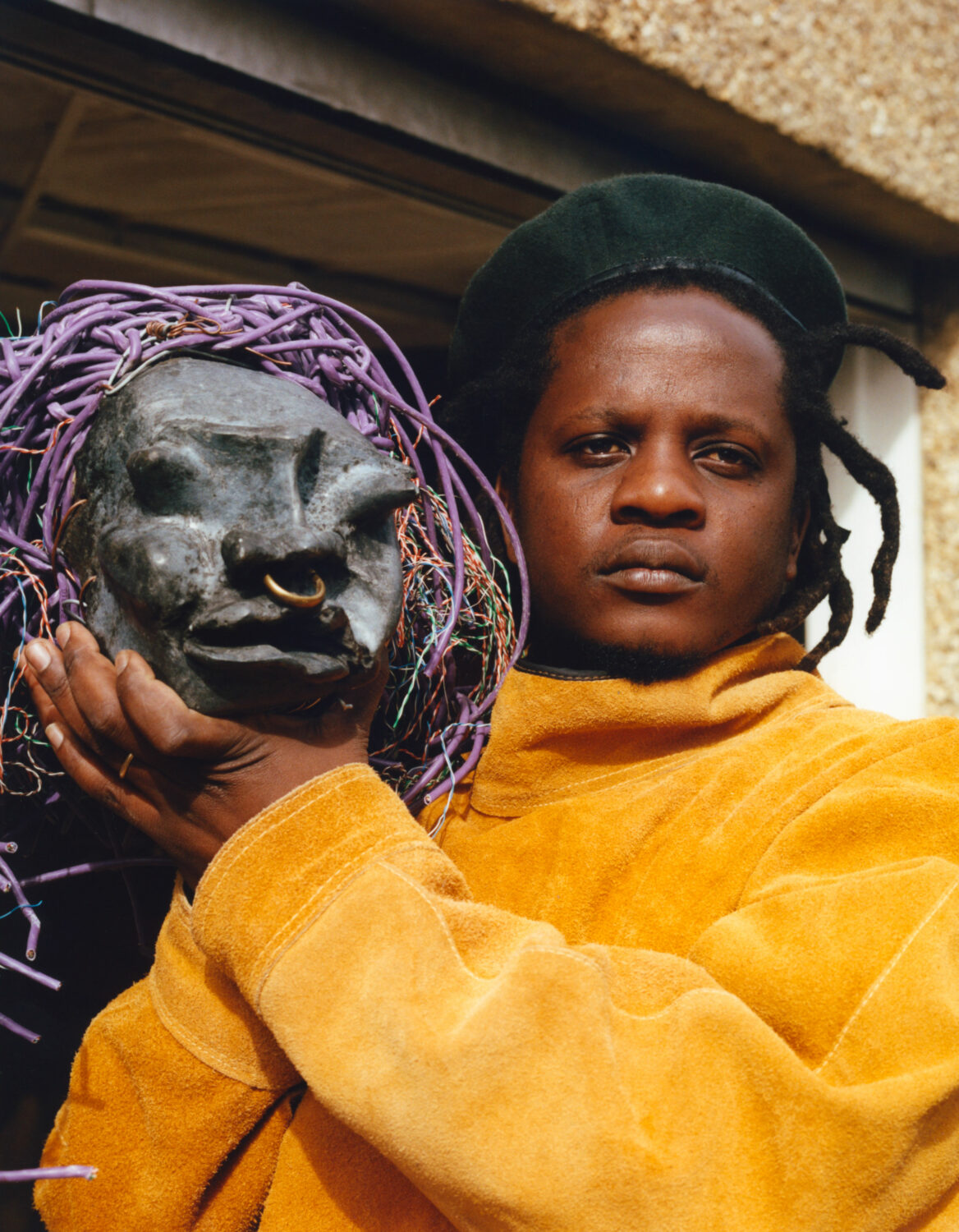
Terrence Musekiwa is a sculptor, but I mean that only as a form of shorthand. To describe the man and his works requires a word we do not yet have in the English language. We would need to invent one. An approximation might be storyteller; his sculptures are narratives plucked from the past, present, and future, fashioned into representative forms hewn from the stone of his native Zimbabwe, embellished with artillery shells, internet cables, and lengths of copper wire.
While the great sculptors of the European Renaissance—Michelangelo, Leonardo Da Vinci, Donatello—brought marble to life through the anatomical correctness of their figures, Musekiwa betrays that same humanistic impulse, albeit through his manipulation of objects: metal screws, plastic cables, brass door handles, knitting needles, ceramic dentures. In other words, Musekiwa’s sculptures make you think about what it means to be human by incorporating all that which is not.
His sculptures are modern in that they are made from the discarded materials that the West ships out to waste sites like Agbogbloshie in Ghana. But though his sculptures might comment on global inequalities, they remain deeply rooted in Zimbabwe’s stone and sculpting traditions.
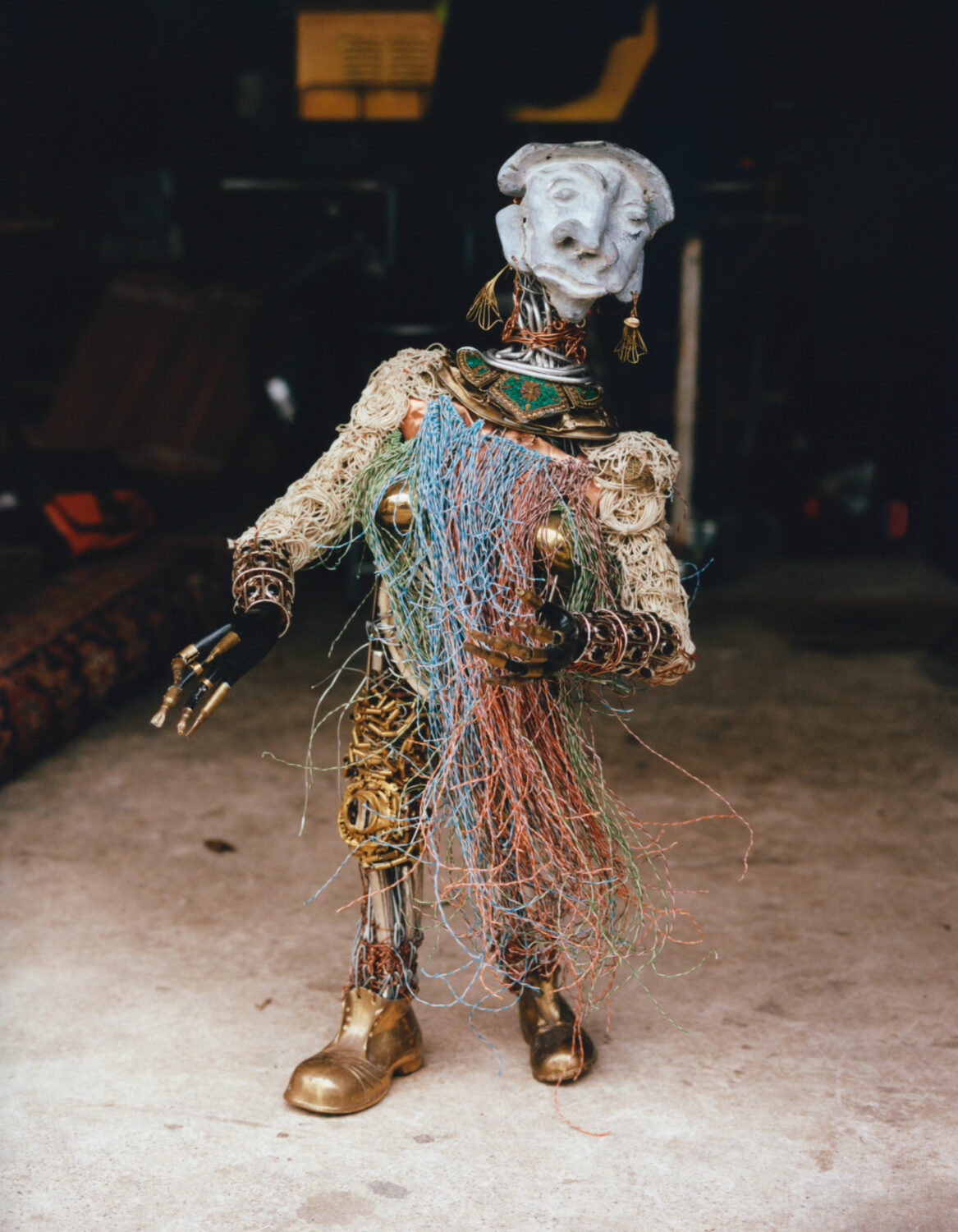
Ogazielum Mba: What works are you making at the moment? Can you talk to me about what’s inspiring you?
Terrence Musekiwa: For me, I’ve been constructing my art for a long time. Every day and any chance I get, I am constructing my sculptures. It takes a lot of confidence and courage, especially with the choice of material. Most of the stone sculptures I first sculpted in Zimbabwe when I went to visit my family. Then I brought them to England and continued to work on them. Normally, the stone is my first port of call when I need to connect with myself and go back to my roots. Stone connects me to my roots, to Zimbabwe. The country is known as the house of stone; that’s why it’s called the Great Zimbabwe, Zimba Zimabu. A house that’s built without mortar but with piles of stones. For me, travelling with the stones is like I’m bringing Zimbabwe with me wherever I go. I can use other stones from other countries, but specifically for the kind of project I’m working on now, the stone needs to be from Zimbabwe.
I’m also inspired by the idea of our untold history. I try to go back to the official history, which we are taught by elders or is contained in the school curriculum, and check that information. Is it true? In my work, using materials from the West and bringing them in contact with the stones of Zimbabwe, I’m remembering the colonial part of my history where Zimbabwe was oppressed by the British. Now I’m trying to rewrite the history of these two countries through my sculptures.
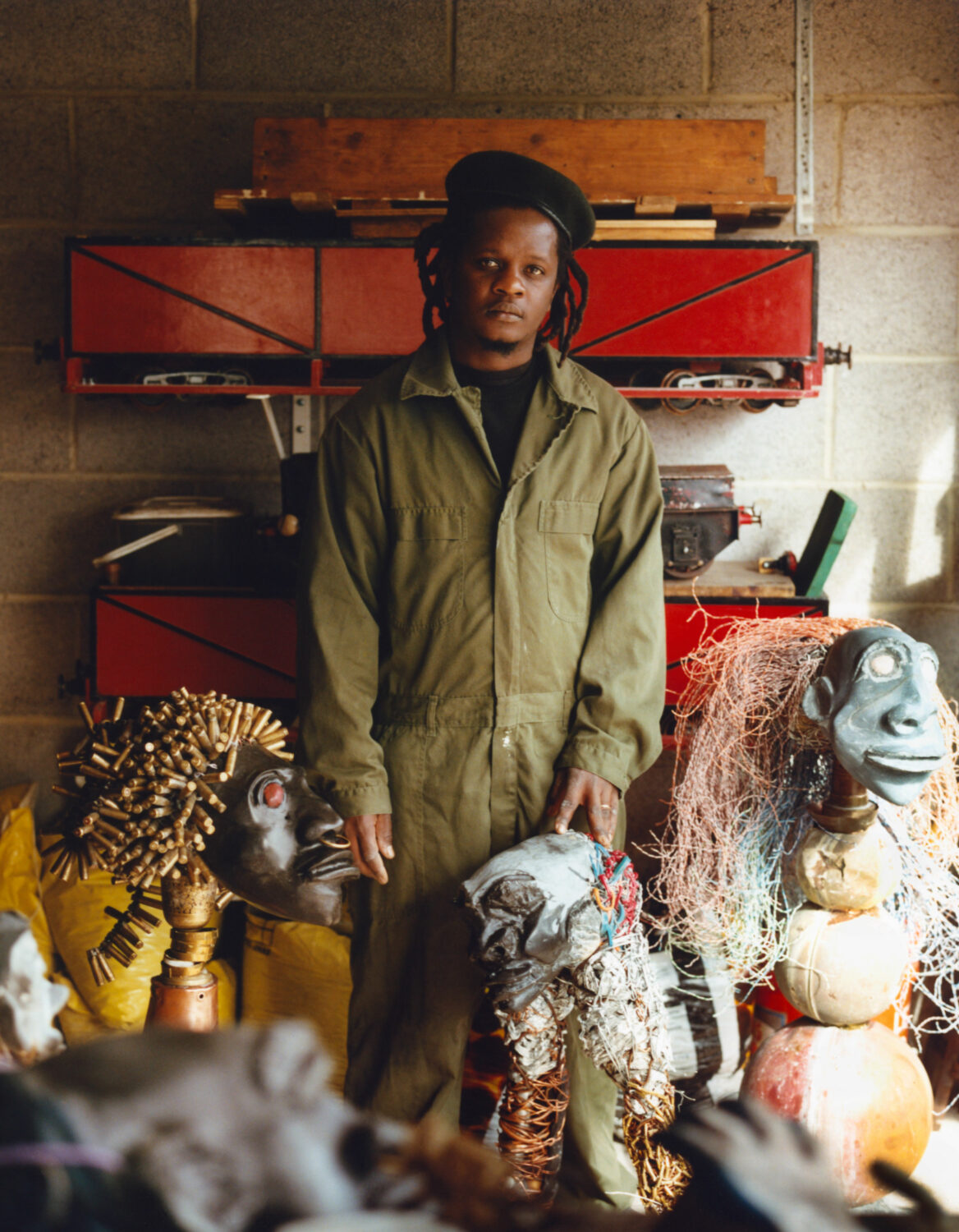
OM: Would you say that sculpting is a form of homecoming for you, both personally and politically?
TM: Yeah, it is. But I grew up in a spiritual family; my grandmother was a shaman, a spirit medium. So I was raised with an awareness of the spiritual dimension of our existence. For me, sculpting awakens the African culture that has survived through centuries of oppression and colonialism. When I sculpt, it’s like I am remembering and using the knowledge of my ancestors, what the whites would have called primitive knowledge. Sculpting comes from ancestral knowledge; I cannot read about it, I cannot research it. It comes from deep within me. My art is spiritual and political. But right now, because of the use of the stones, I’m more focused on the political side.
OM: Where does your sculpture begin for you? Does it begin in your head, in your imagination, or when you encounter the materials that you’re going to use?
TM: It’s a process. The sculpture and I don’t know each other, we walk beside each other on different paths. But when our paths cross, there is a mutual understanding. For instance, I carved the stones in Zimbabwe not thinking of the artillery shells in England. But then, when I visited London, I passed by an antique shop that displayed artillery shells. A connection formed in my mind and the sculptures were born. It’s difficult to explain, but sculpting involves searching and knowing myself well. If I know myself well, I can predict the materials that each sculpture will need. Everything still begins with carving stone in Zimbabwe.
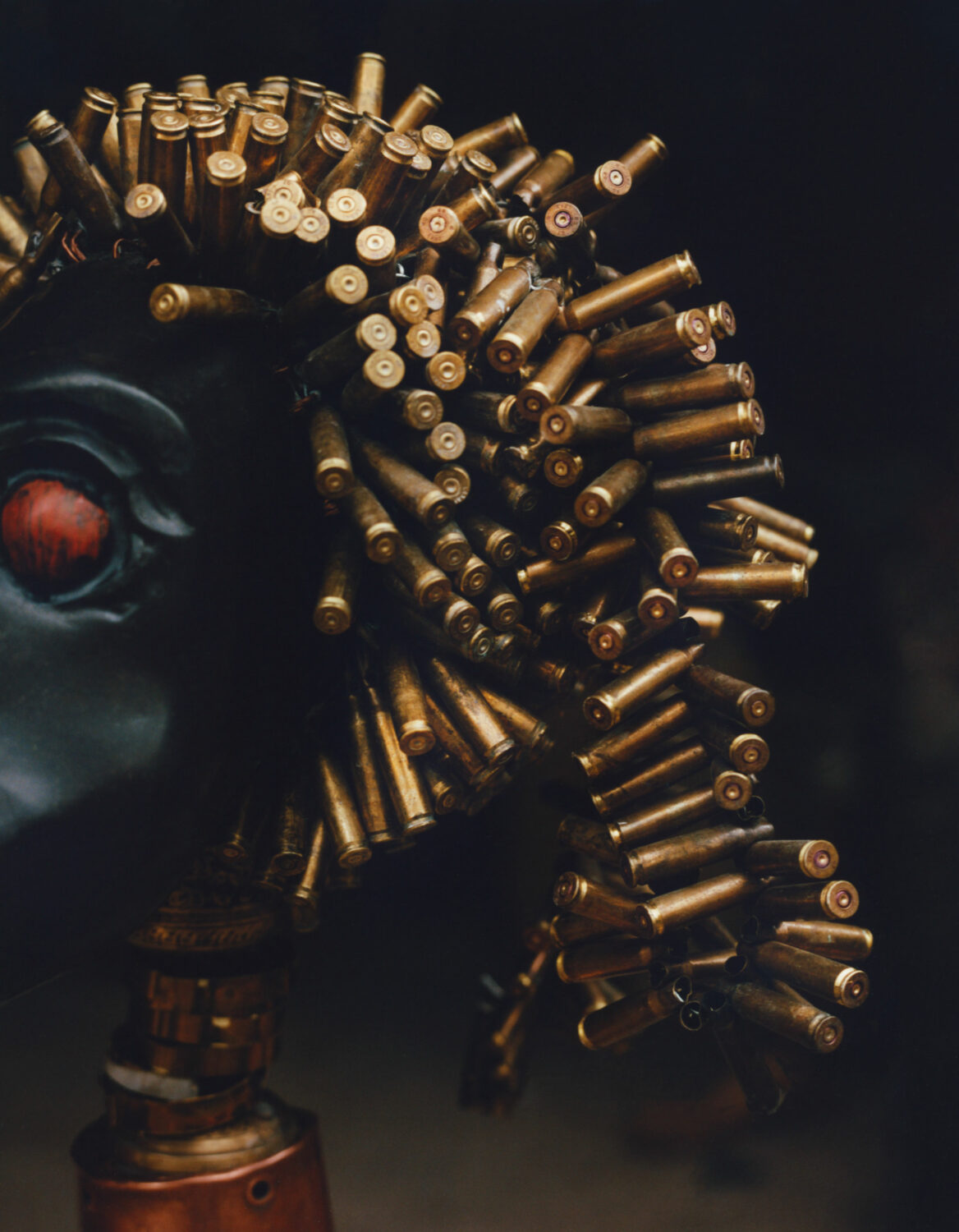
OM: Your new body of work is politically charged. Can you talk about your experience of making work from this vantage point?
TM: I feel like it’s better to be spiritual than to be physical. If you are spiritual, you live in two worlds, the spiritual realm and the physical realm. I see my work as spiritual parables, stories that allow us to see our physical universe differently. I don’t believe in pointing fingers to criticise, but in narrating stories through my work that can generate new ways of seeing the world. I use my work to connect African stories so that we can see despite our differences, we are still living the same reality.
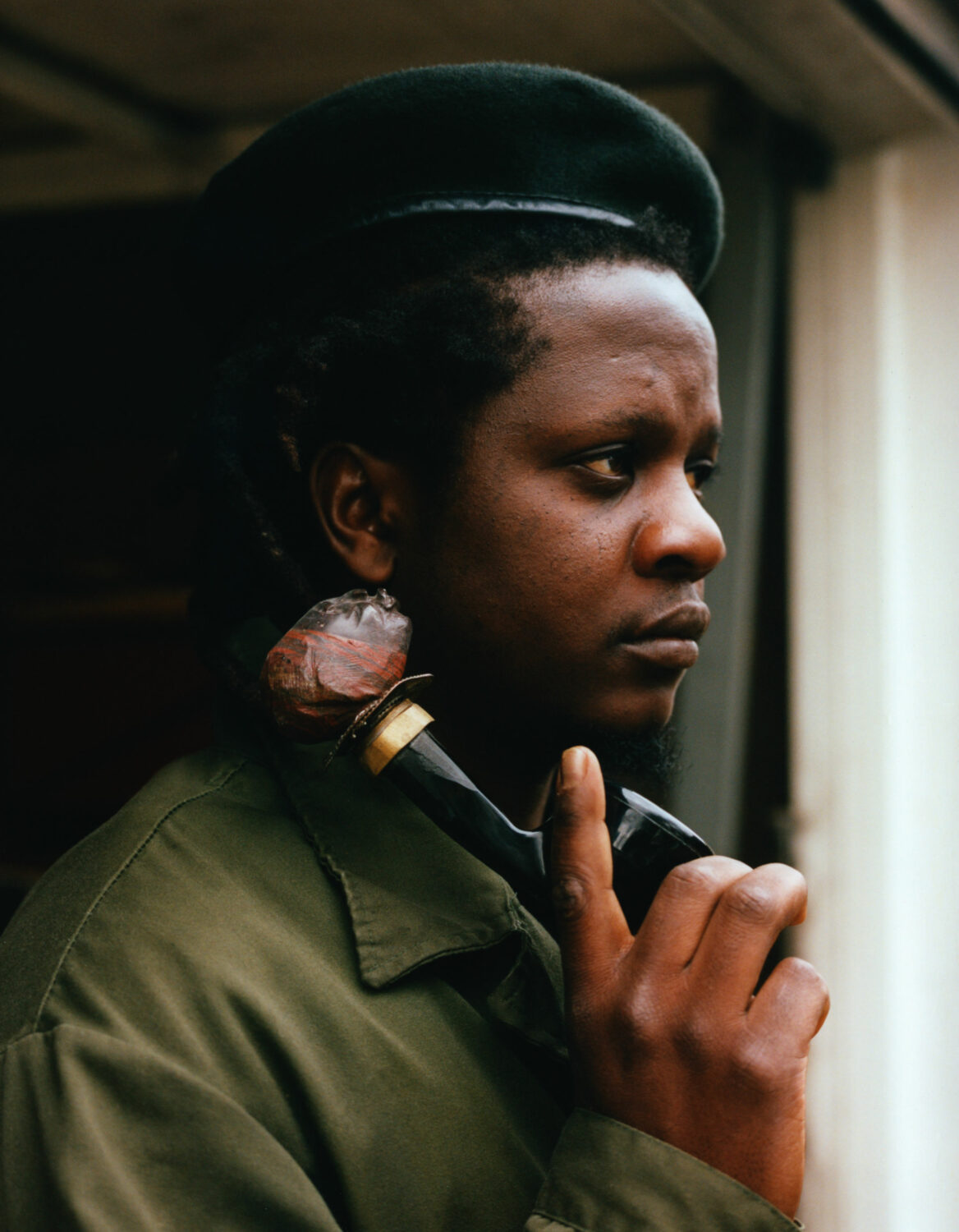
OM: What word would you use to describe your relationship to your work after you’ve made it?
TM: That’s a tricky question. I haven’t thought of that before, but you’re making me think about it now.
OM: Do you feel like they are like your children or not really?
TM: No, it’s not like my child. It’s a guided spirit; it opens doors. My sculptures open doors for me. That’s how I see it. When I see them outside, they have gone places which I’ve never even dreamt of going. I mean, exhibiting in Art Basel or going to HGallery in Bangkok where I’ve never been. They navigate the way for me to live in the world. They are navigators.
Editors-in-Chief: Momo Hassan-Odukale & Mira Makadia
Editor-at-Large: Daniel Obaweya
Art Director: Mira Makadia
Designer: Ify Ike
Editorial Consultant: Ogazielum Maria Mba